How to Implement Agile Procurement in 7 Steps


Procurement within large enterprises can often feel like swimming against the current.
Rigid systems, lengthy approval processes, siloed information, and limited supplier collaboration are all common pain points that limit your ability to adapt to rapidly changing market demands.
However, agile procurement offers a solution.
By embracing agile methodologies, procurement teams can unlock new possibilities and introduce adaptability, collaboration, and continuous improvement into their procurement.
Today, we will take you through the seven steps you must go through to kickstart your journey towards agile procurement.
Let’s get going.
Before developing strategies and implementing any new tools or processes, you need to know everything about your current procurement process.
And who knows—maybe you’re already using some agile methods or following agile principles, but you simply don’t call it agile.
After all, agile is commonly associated with software development.
In any case, you should take a close look at your organization’s existing procurement processes, systems, and practices.
This way, you will identify areas where traditional procurement methods may be hindering agility and efficiency.
These pain points could include:
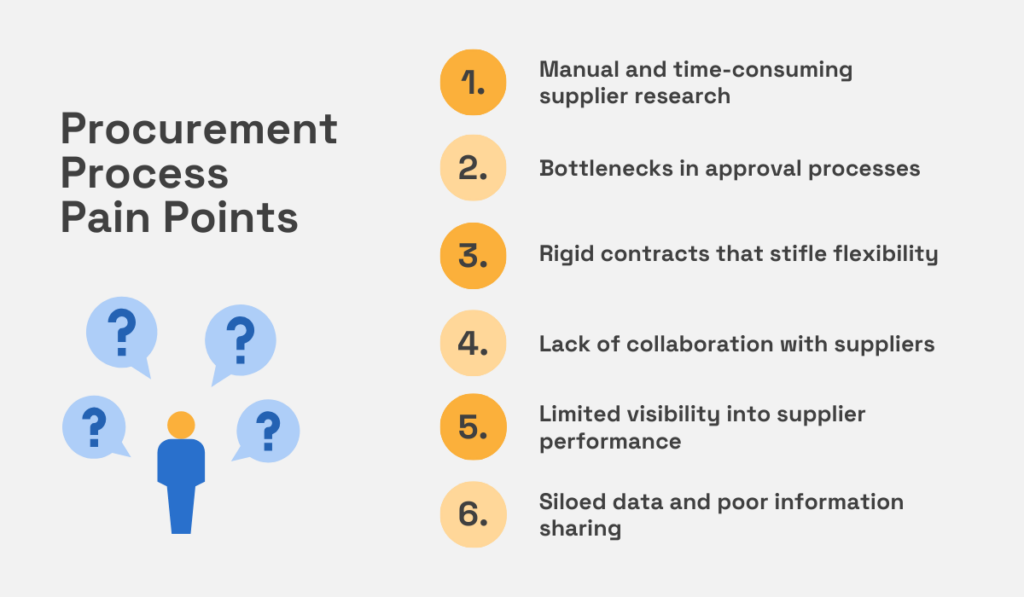
Source: Veridion
Unfortunately, all of these obstacles prolong the procurement lifecycle and hinder adaptability to market fluctuations, pricing changes, and supply chain disruptions.
For example, long approval processes can significantly delay procurement cycles, impacting your responsiveness to market shifts.
Similarly, inflexible contracts may restrict your ability to seize emerging opportunities or adapt to evolving business needs.
However, when you scrutinize each aspect of your procurement workflow, you will get valuable insight into areas ripe for improvement.
The key objective during this first step is, therefore, to identify bottlenecks and inefficiencies that may impede agility.
This also involves understanding their underlying causes:
By asking the right questions, you’ll gain a clear understanding of what changes are needed to foster agility.
Armed with this knowledge, you can step into the next phase of agile transformation.
For agile transformation, you need to create a new, agile process that will address all of the pain points of your current, traditional approach to procurement.
For example, if you identified lengthy sourcing cycles as a pain point, the goal will be to improve speed-to-value by reducing sourcing timelines.
If collaboration with suppliers was lacking, a goal you would focus on is enhancing supplier engagement and collaboration to drive innovation and value creation.
Simply put, the aim is to create an agile process that will eliminate these inefficiencies.
We’ll take inspiration from Mirko Kleiner, a thought leader in Lean-Agile Procurement, who developed a process in response to negative experiences when working as a developer.
The pain points included upfront agreements on scope, cost, and timelines, as well as decision-making processes that required detailed planning and took months to complete—which are also typical issues in traditional procurement processes.
Kleiner was called upon to assist the procurement department and devised an agile process that heavily relies on three factors:
This approach significantly reduced documentation, sourcing times, and long contract negotiations.
And it proved to be both lean (cutting unnecessary steps and documentation) and agile (flexible and collaborative).
One notable success story of using this agile process comes from CKW Group, Central Switzerland’s leading energy services provider.
They opted for Lean-Agile Procurement to source a group intranet solution, as traditional RFP methods were too time-consuming and ineffective.
In just a 2-day workshop, CKW co-created an agile contract with three vendors.
They also reduced social and technical risks on the spot as they had an opportunity to validate product, service, cooperation, and vendor competencies.
Plus, they increased business value by involving customers from the start.

Source: Agile Business
This is just an example of one effective procurement process.
But it is by no means the only one.
An agile procurement process can vary depending on organizational needs as long as it adheres to agile principles and follows agile practices, which we will explain later on.
Whether it involves replacing RFPs with supplier workshops, dividing long processes into shorter phases, or adopting new technologies to speed up the process, the goal remains the same.
Create (or adopt) a process that will work on bringing more responsiveness and deliver early value to your organization by solving the inefficiencies of your current procurement processes.
However, no matter which path you take to creating a more agile procurement process, one thing is constant: you must build an agile and cross-functional team.
For that, you need people from different areas—procurement specialists, legal experts, finance professionals, internal stakeholders, suppliers, and end-users—all working together to transform procurement into agile.
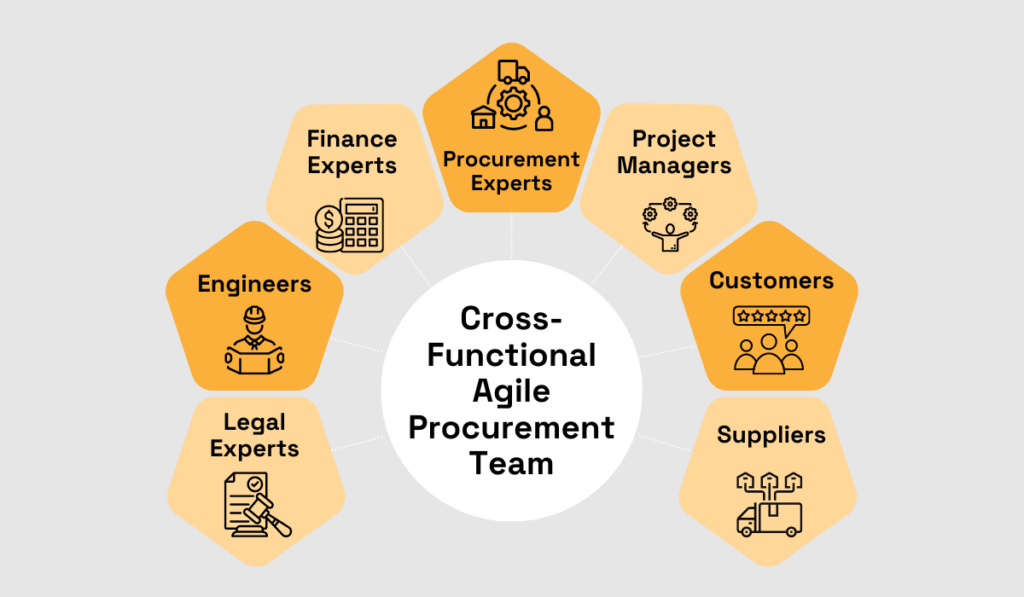
Source: Veridion
A team consisting of all these individuals is going to have a wide range of skills and expertise, giving them end-to-end competencies for the whole product lifecycle.
This means that they can independently manage various aspects of the procurement process, including market research, supplier engagement, negotiation, contract management, and risk assessment.
This empowers them to make informed sourcing decisions quickly, reducing lead times and improving agility in responding to market changes or organizational needs.
When aligning roles from Agile into agile procurement, the following structure is often employed:
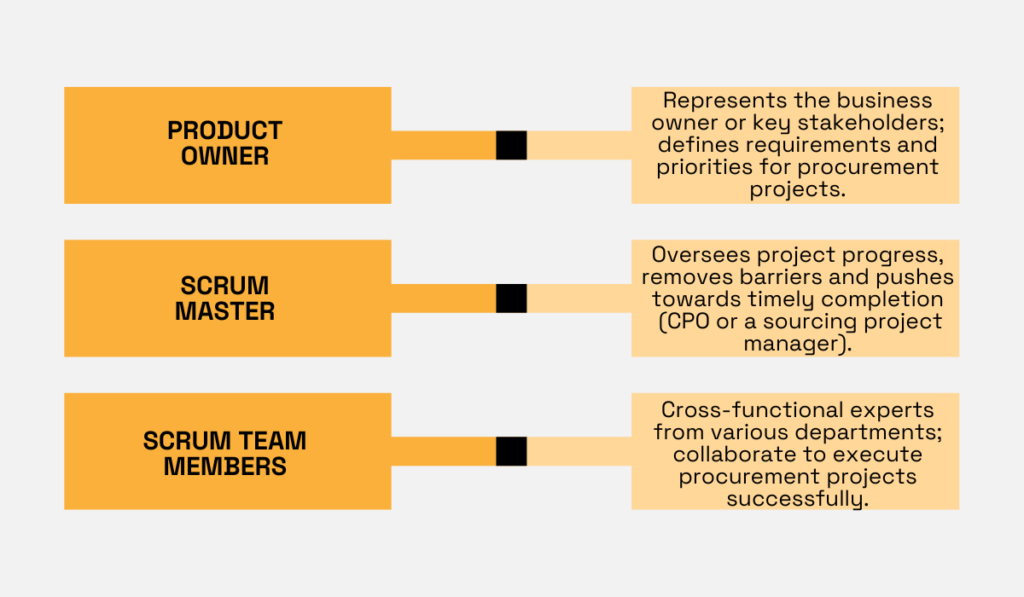
Source: Veridion
Critical in Agile and Scrum methodologies, these roles ensure effective project management and collaboration within the procurement team.
Additionally, it’s crucial not to overlook the importance of suppliers and customers.
They often possess valuable information about market trends, industry developments, potential risks, and opportunities that can significantly impact procurement decisions and outcomes, which makes them essential team members.
So, with the right team in place and with insights from suppliers and customers, you are well on your way to agile procurement transformation.
Now that your agile procurement team is in place, it’s crucial to arm them with the necessary technological firepower.
Collaborative tools with real-time features and data-sharing capabilities are indispensable for fostering continuous communication and collaboration among team members, stakeholders, and suppliers.
But don’t stop there.
You should also invest in technology that supports agile procurement processes by replacing manual workflows with automation and minimizing paperwork.
In other words—procurement automation tools.
E-procurement software is a prime example.

Source: WhatFix
It provides a centralized platform for managing all aspects of the procurement process, from raising purchase requisitions and generating purchase orders to streamlining payments.
By digitizing and standardizing these processes, e-procurement software reduces errors and speeds up procurement cycles.
These tools also generate valuable data that you can leverage to further enhance agility.
For example, you can measure and analyze procurement performance to make more informed decisions, identify cost-saving opportunities, optimize supplier performance, and mitigate risks.
And besides using your internal data, you should also leverage external data solutions like big data platforms.
These tools are powered by advanced analytics and machine learning algorithms and provide actionable and timely insights, which are crucial for becoming more agile.
This technology is particularly beneficial for supplier sourcing, which is traditionally a time-consuming process.
With AI, machine learning, and NLP, you can significantly minimize the time spent on supplier search.
For instance, our supplier sourcing enabler Veridion operates on this principle, delivering supplier data to procurement teams in a fraction of the time compared to manual methods, as you can see in the image below:
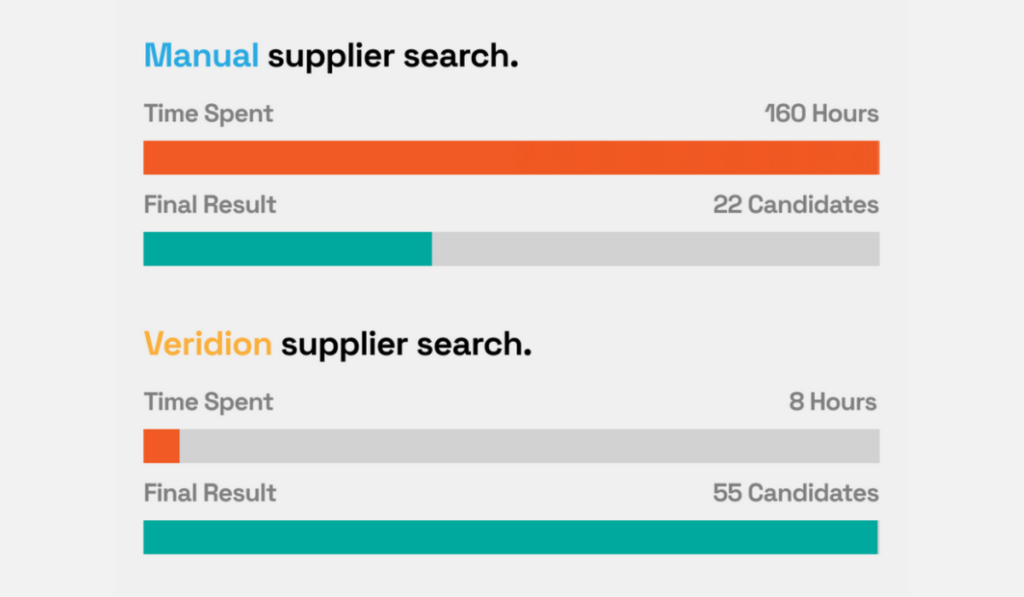
Source: Veridion
Veridion’s database comprises millions of global suppliers and their products, constantly refreshed to ensure accuracy and relevance.
With just a few clicks, you can access a list of suppliers tailored to your criteria, all thanks to Veridion’s APIs, which can be easily integrated into your systems.
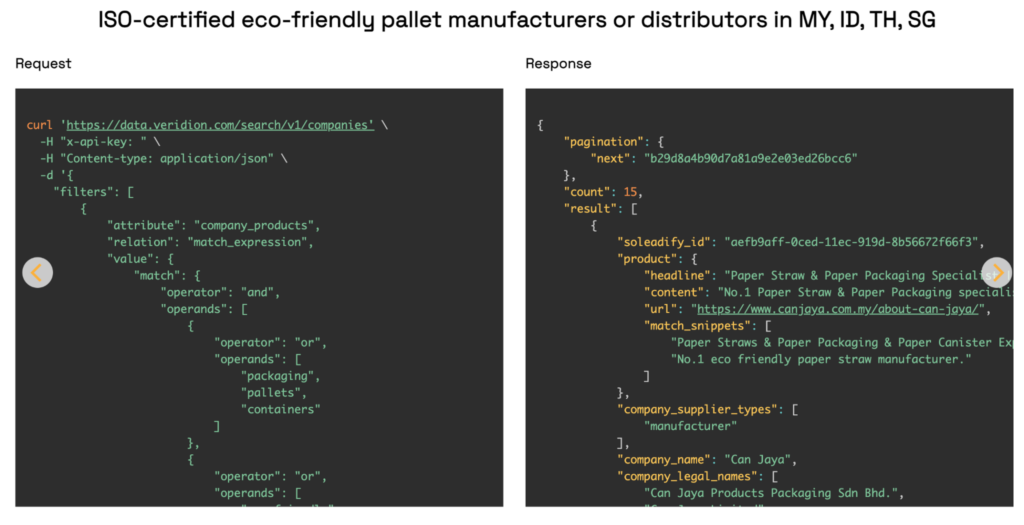
Source: Veridion
So, how does this technology make your procurement more agile?
Here are some key benefits:
In summary, all these technologies are designed to streamline processes, enhance collaboration, and make procurement teams more agile.
And when you drive agility and efficiency, you can also deliver greater and faster value to your organization.
As you move forward with your procurement strategy, it’s crucial to embrace agile practices within your organization.
Let’s dive deeper into this essential step.
Two fundamental agile practices that work hand in hand are iterative planning and incremental delivery.
Simply put, instead of approaching procurement as a single, monolithic task, you should break down activities into smaller, more manageable tasks or iterations.
Then, you should plan for each iteration by defining goals, tasks, timelines, and resources needed to achieve specific deliverables within this iteration.
This approach ensures that you’re not waiting until the entire procurement process is complete to deliver value.
Instead, you deliver value continuously by completing key procurement activities in stages.
For instance, let’s consider the procurement of software development services and how iterations would look like in this case:
However, the point is to integrate feedback loops after each iteration to get stakeholders’ feedback after every step.
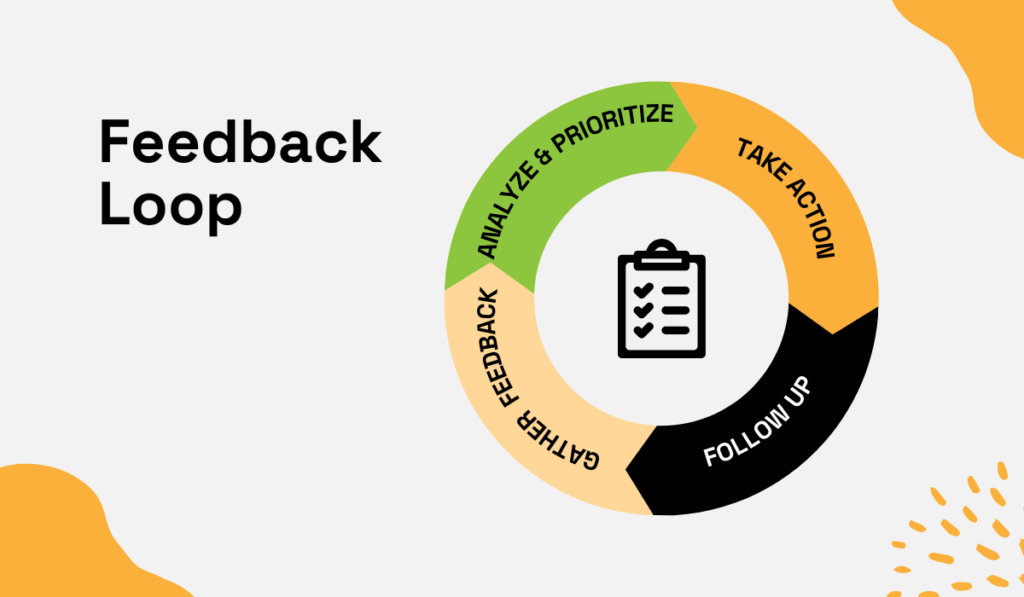
Source: Veridion
This allows you to make necessary adjustments, enhancing flexibility and readiness to adapt to changes.
Also, more frequent feedback leads to higher-quality procurement outcomes.
Here are the benefits you can expect from such an agile procurement process:
There is one more practice that comes to mind from agile and lean methodologies and that can also be applied to procurement.
That is the Build-Measure-Learn process.
In the context of procurement, we can adapt it to the Source-Measure-Learn approach.
What we mean by this is simple—source suppliers, measure their performance frequently, and learn.
In other words, make informed decisions based on their performance, such as:
Ultimately, embracing core agile practices, such as working in shorter cycles, measuring supplier performance frequently, and prioritizing stakeholder feedback, is key to achieving agility in procurement.
Collaboration lies at the heart of agile transformation within procurement.
Here, it’s not just about exchanging updates or ticking off tasks.
In agile, collaboration means forming dynamic teams with diverse expertise and actively involving stakeholders and suppliers in every step of the procurement journey to find the best path forward together.
In “Getting Started With Agile: Customer Collaboration Over Contract Negotiation,” Jeremy Jarrell, an agile coach, emphasizes the importance of teamwork highlighted in the agile manifesto.
It’s about working closely with customers and development teams to solve problems together, rather than seeing them as opponents.
This principle holds true in procurement, too, where stakeholders and suppliers should become trusted partners rather than checkboxes on a list.
Too often, procurement teams view suppliers as mere suppliers, missing out on the benefits of building strong relationships.
But when you see them as partners, you can unlock cost savings, reduce risks, and tap into innovative solutions.
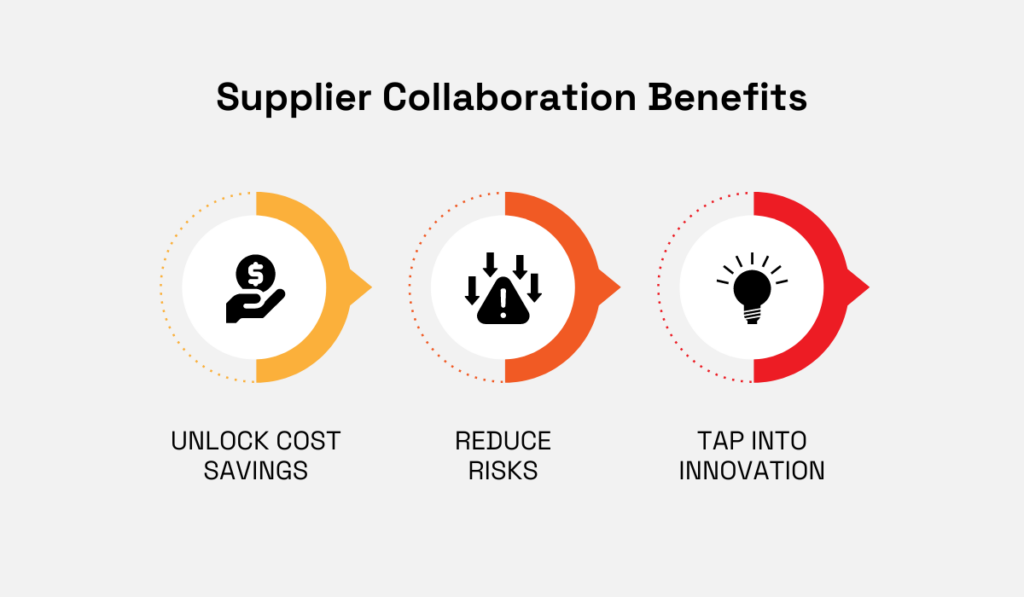
Source: Veridion
So, to foster effective collaboration and reap these benefits, it’s essential to shift from this adversarial mindset to one focused on mutual advantages.
This will improve supplier relationships but also lead to better contract outcomes.
This is crucial, since in agile procurement, the emphasis is not on negotiations and crafting long-term contracts.
Agile contracts are flexible and adjust along the way.
For such contracts to be (and stay) mutually beneficial, there must be strong collaboration in place.
So, how do you make it happen?
By embracing collaboration in these ways, your procurement team can build stronger relationships, drive innovation, and achieve better outcomes in an agile environment.
As you approach the final phase of implementing agile procurement, there’s one critical step left: regular iteration.
This step is all about embracing continuous improvement, another core principle of agile procurement.
Let’s break it down with an example.
Let’s say you are introducing a new supplier evaluation process to boost performance and reduce risk in your procurement.
Then, after implementation, you gather feedback from both internal stakeholders and suppliers to assess the effectiveness and efficiency of the process.
This feedback reveals that, while the new process has improved supplier communication, it has also introduced delays due to additional documentation requirements.
Now armed with this feedback, your team iterates on the procurement process.
You simplify documentation requirements while ensuring effective communication with suppliers remains intact.
By doing so, you address identified issues while maintaining improvements.
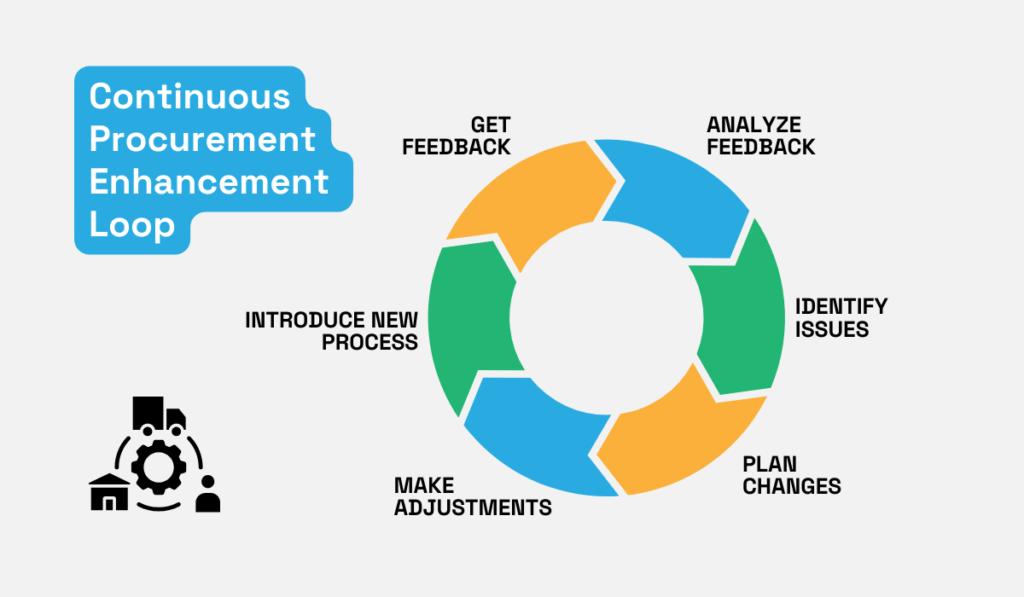
Source: Veridion
Of course, this iterative approach isn’t limited to one process.
You can apply it—and you should—across all procurement activities.
By consistently refining and adapting your procurement processes based on feedback and data insights, you keep your procurement agile and responsive to changing needs and challenges.
In essence, regular iteration ensures your procurement practices remain agile, effective, and future-ready, ready to tackle whatever comes your way.
Until now, implementing agile procurement might have felt overwhelming.
However, we hope that these seven steps helped you realize that transforming your procurement into agile is well within your reach.
It’s all about spotting the non-agile bits in your current procurement processes and swapping them out for agile ones.
The real magic lies in assembling your teams that will work across functions and collaborate closely with suppliers.
When you blend in some cutting-edge technology, you will be set to soar to new heights in procurement.
So, roll up your sleeves, analyze your current procurement process, and embrace agility where possible.
It will pay off sooner than you think.